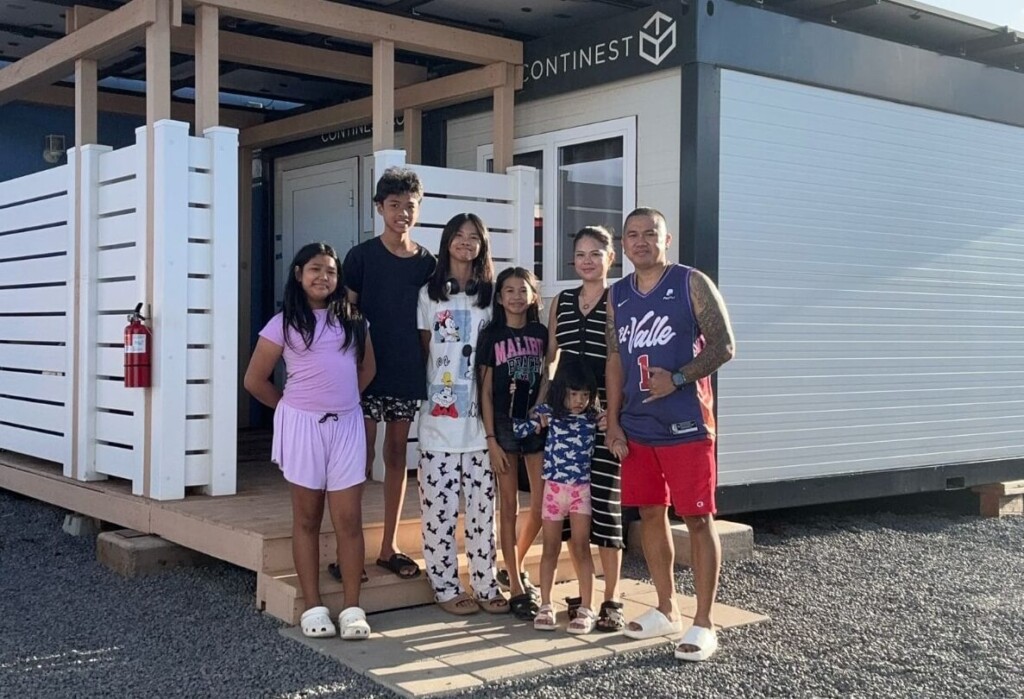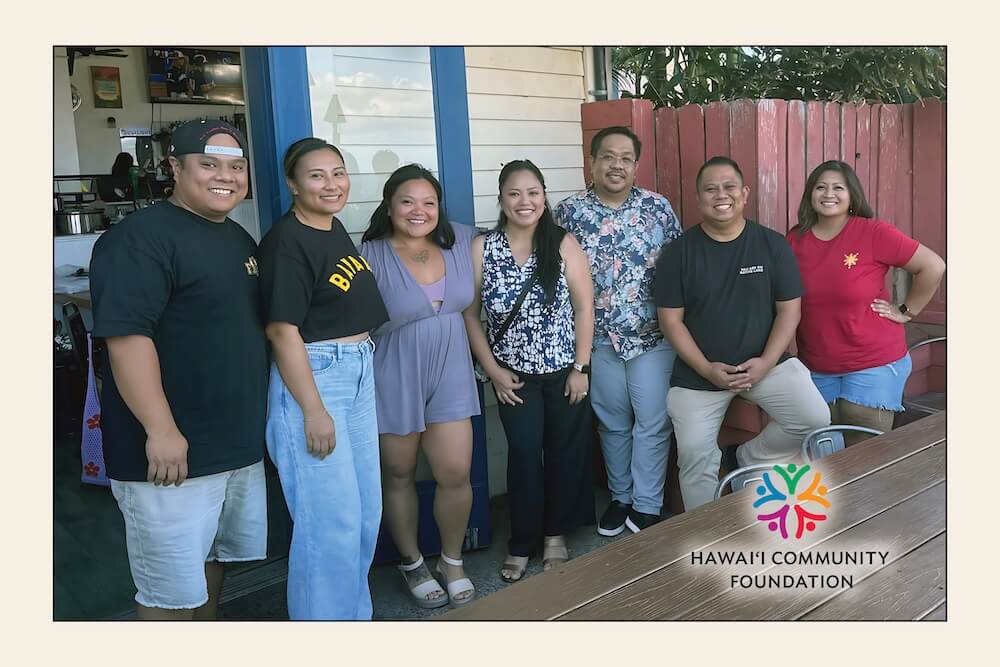Maui Strong Fund Grantmaking to Target Housing, Mental Health

Since the August 2023 Maui wildfires, Hawai‘i Community Foundation (HCF) has been collecting survivor-based data to gauge recovery needs and progress. This data has been instrumental in helping HCF align its response with the community’s needs.
The Economic Research Organization at the University of Hawai‘i (UHERO) has been collecting data to monitor, understand and address the health and social impacts of the 2023 Maui wildfires. The first report released in January showed 65% of participants were in temporary housing.
The UHERO data reinforced the testimony and input HCF had been collecting from the community. Organizations working in Maui have been focused on both financial assistance and building interim housing to address the needs of the survivors they work with. HomeAid Hawaiʻi has highlighted the need for more than 1,000 units for wildfire survivors and the Council for Native Hawaiian Advancement has emphasized the need to offer housing at rates significantly more affordable than the current housing market. The collection of qualitative and quantitative data has informed the foundation’s strategy to support several mid-term housing projects and services, including those by Hawaiʻi Community Lending, HomeAid Hawai‘i, and the Council for Native Hawaiian Advancement, which each received Maui Strong Fund grants earlier this year.
When the Maui Wildfire Cohort Study (MauiWES) was published by UHERO in May, statistics began to show movement in the right direction. The findings were based on a sample of nearly 680 participants, most of whom lived in Lahaina in August 2023. The report showed that 56 percent of participants were living in temporary shelter and 10 percent had moved into permanent homes. The report also documented that 51 percent of participants experienced depression, 35 percent reported low self-esteem, 30 percent had moderate to severe anxiety and 4.4 percent had considered suicide in the past month. Before the fires, a third of Maui residents reported experiencing depressive symptoms, according to a June 2023 UHERO Rapid Survey.
The Hawai‘i State Rural Health Association had similar findings after surveying 1,105 fire-impacted individuals as part of its “Maui Together for a Healthier Tomorrow” wildfire assessment. HSRHA reported that 64 percent of fire survivors feel their mental health has declined over the past year, though many of them consider mental healthcare a lower priority compared to other basic living and economic needs.
The “Maui Recovery Survey: Housing & Jobs” report released in October found that rent costs and housing instability have increased dramatically since the fires, reinforcing the need for expanded housing projects. Residents are paying, on average, 43 percent more rent for the same or fewer bedrooms. Units with three or more bedrooms have seen the highest increase at over 80 percent, meaning larger families have been most impacted. Compared with before the fire, the number of fire-affected households living with friends/family or unhoused has doubled. And further displacement is still a threat.
Social service provider Family Life Center broke ground on its ‘Ohana Hope Village 11 days after the Aug. 8, 2023 wildfires. Its goal: to provide a safe place for fire-affected families to reconnect and heal.
“Family Life Center’s mission is to stabilize the lives of people in their time of need by connecting individuals to a wide variety of supportive services that allow them to reconnect, heal and succeed in life,” says Dr. Ashley Kelly, chief operating officer at Family Life Center. “The devastating wildfires that swept across our island left our community in need of stability and healing.”
Today, the Kahului temporary housing project is home to nearly 50 individuals in modular units equipped with private bathrooms and kitchenettes. The community was designed to accommodate multi-generational or large families, with a layout that places groups of four to six homes around communal laundry facilities, a large kitchen, and dining space.
In October, Family Life Center was awarded $5 million from HCF’s Maui Strong Fund to finish construction on the remaining 72 homes, which will house another 300 individuals. Maui Health Foundation also received an award in October to address the shortage of health care professionals in Maui and Hawaiʻi Community Lending, Inc. was awarded funding to bolster rebuilding efforts.
These grants are an example of how HCF is directing grantmaking strategy to meet the fire-affected community’s continued needs for interim- and long-term housing and mental health support. HCF is offering a MSF grant opportunity for both housing and mental health, plus a request for proposal for a mental health crisis center program that will match fire-affected households and individuals with providers.
“Fire-affected individuals and families deserve to have safe and stable homes that are affordable and located in their communities,” says Keanu Lau Hee, HCF’s senior director of the Maui Recovery Effort. “To cultivate more solutions to meet the housing needs of our Maui ‘ohana and to support the mental health and wellness of the community as they continue to recover, we have opened three new funding opportunities from the Maui Strong Fund.”
That’s what makes FLC’s ‘Ohana Hope Village project so important. Families living at the village have told staff that moving in has given them some peace and enabled them to better heal and spend time with one another.
“We are so happy to be now living at the ‘Ohana Hope Village,” Chester Lagazo told a staff member. “Now we can focus on raising our children and giving them the time they need. We now don’t have to worry about rent for a couple of years or not having a stable home for our children.”
The MauiWES report recommended that Hawai‘i should strengthen its community networks; engage local, culturally-grounded organizations; and enhance resilience by increasing access to healthcare and insurance coverage for fire-affected individuals. Participants in the study have shared a high positive satisfaction with service provided by community organizations and continue to receive assistance from various sources.
As of Oct. 7, 2024, MSF has awarded $125 million to more than 200 organizations. HCF will continue to accept applications on a rolling basis for the “up to $100,000” funding opportunity which considers grant proposals addressing critical needs in the recovery effort. “The Hawaiʻi Community Foundation is committed to the long-term recovery of Maui and will continue to explore collaborative efforts to respond to the greatest needs of fire-affected families and individuals,” says Lau Hee.
The Hawaiʻi Community Foundation’s Maui Strong Fund is providing financial resources to support the immediate and long-term recovery needs for the people and places affected by the devastating Maui wildfires. For more information, visit the Maui Strong Fund page.
The Economic Research Organization at the University of Hawaiʻi “Maui Recovery Survey: Housing & Jobs” is in partnership with the Council for Native Hawaiian Advancement (CNHA) and the Hawai‘i Community Foundation (HCF).







